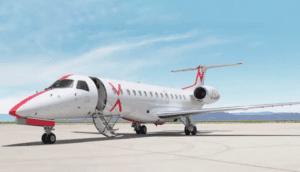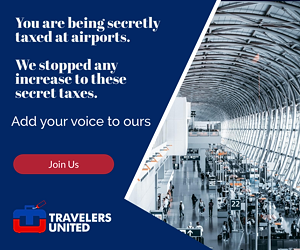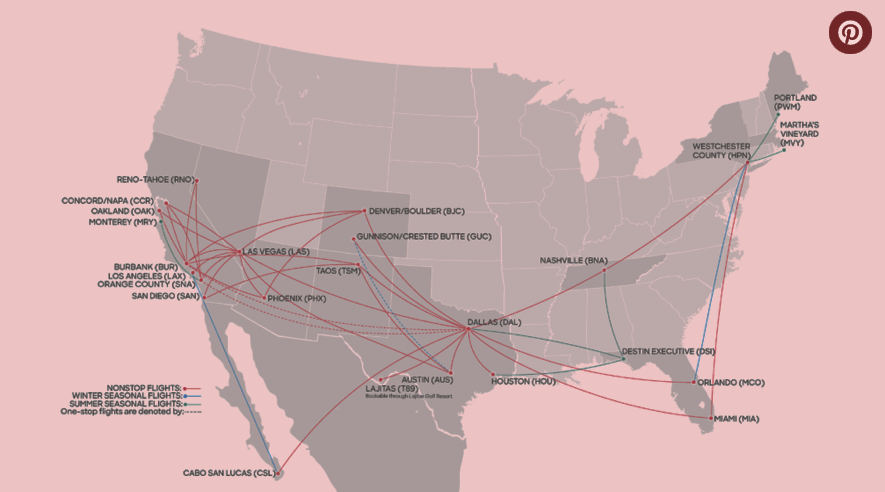
Major airlines and airline unions have protested the establishment of airline safety rules of semi-private airlines that skirt training and security rules followed by scheduled airlines.
 Travel Weekly published a recent article about the largest semi-private airline in the US. The headline states that American Airlines is having a neighborhood feud with JSX. It is far more than a simple neighborhood event. This “feud” has the makings to spread to other semi-private airlines (Tradewind Aviation, Aero and Tailwind Air) and may be a step too far even for DOT and the FAA, who tout the “one level of airline safety” mantra.
Travel Weekly published a recent article about the largest semi-private airline in the US. The headline states that American Airlines is having a neighborhood feud with JSX. It is far more than a simple neighborhood event. This “feud” has the makings to spread to other semi-private airlines (Tradewind Aviation, Aero and Tailwind Air) and may be a step too far even for DOT and the FAA, who tout the “one level of airline safety” mantra.
In the words of Robert Silk in Travel Weekly, American Airlines throws down the gauntlet. They have been joined publicly by the Airlines Pilots Association (ALPA) and other industry unions.
Semiprivate carriers, often operating under regulatory approval as a public charter, resemble private carriers by operating out of private airport terminals with small planes. The maximum number of seats allowed by the FAA for public charters is 30. Cabin interiors offer plenty of legroom. Because they use small terminals that don’t require TSA checkpoints, customers only have to arrive about 15 to 30 minutes before their flight.
However, semiprivate carriers resemble large commercial airlines by offering regular flight schedules with published ticket prices that tend to be similar or somewhat higher than first-class domestic seats but far below private prices.
 JSX serves 23 airports (both domestic and international) and flies scheduled routes between these destinations.
JSX serves 23 airports (both domestic and international) and flies scheduled routes between these destinations.
No major airlines feel ignoring the 1.500-rule pilot training rule and TSA’s security protocols are “small potatoes.” The lack of FAA-trained pilots and no TSA rules are major sticking points.
And in the brouhaha over security, TSA rules are ignored or seem to be. The Essential Air Services (EAS) program renewing the SkyWest Charter started the most recent kerfuffle. According to ALPA, the SkyWest proposal doesn’t meet the safety requirements mandated by Congress.

JXS Route Map (2013)
One level of safety has been the mantra of aviation regulators for the last decade.
For every FAA reauthorization bill, it has been included in the past decade. Any time the airlines bring up a softening of the 1,500 flight-time rule, the mantra is repeated regularly. The regulators have followed the rule closely, except when they don’t.
Other consumer advocates and I cannot understand why some semi-scheduled airlines can ignore the safety regulations. Mainline carriers must follow the rules to the letter of the law. In protesting the SkyWest Charter arrangement, ALPA said, “Weakening would occur by allowing the applicant to operate scheduled flights in all but name while shirking the responsibilities of being a scheduled operator.”
Department of Transportation (DOT) and Federal Aviation Administration (FAA) have declared JSX and a handful of other “charter” operators semi-private carriers. However, as ALPA said in a summer filing, “If it looks, swims, and quacks like a duck, it is a duck. Since JSX operates schedule service, it should be deemed to do so, regardless of the fictitious regulatory disguise that it dons.”
American Airlines’ position may be self-serving, but if the DOT and FAA require rules set by Congress, such is life.
In a joint letter to regulators (DOT-OST-2022-0071-0015_attachment_1), the major airline unions claim:
As a matter of safety, providing scheduled service under Part 135 skirts a host of scheduled-airline safety regulations contained in Part 121, including the 1,500-hour threshold for an Airline Transport Pilot certificate (a/k/a First Officer Qualifications), the age 65 retirement mandate, and minimum rest along with no interrupted rest. These and other Part 121 safety regulations have kept U.S. aviation as the safest mode of transportation in the world, but which do not apply to companies abusing the loophole in the regulatory regime. Operating scheduled flights in this way carries out an end-run around the FAA’s commitment since the mid-1990s to One Level of Safety, which required that Part 135 scheduled carriers move to the higher, more stringent Part 121 standard.
As a matter of security, passengers flying these flights are not subjected to traditional TSA magnetometer and X-ray airport security checkpoints. Instead, passengers are cross-checked against the TSA No Fly List, without more screening. Indeed, avoiding TSA “invasive security procedures” is the major source of the time savings and the exclusive “one percenter” experience JSX offers. Yet security requirements brought forward by TSA since the terrorist attacks of September 11, 2001, have been essential to maintaining the security of our nation’s aviation system and our homeland security.
We are also concerned about elevated emissions and increased airspace congestion…
 The joint letter describes the beginnings of JSX. From a collection of smaller airports with almost no competition, JSX was provided with an operation permit. “Now, JSX is flying between Las Vegas and Dallas, Phoenix, Denver, Miami, and Westchester. It operates longer routes in markets already well-served by airlines and competes unfairly based on lower airline safety rules and security standards.
The joint letter describes the beginnings of JSX. From a collection of smaller airports with almost no competition, JSX was provided with an operation permit. “Now, JSX is flying between Las Vegas and Dallas, Phoenix, Denver, Miami, and Westchester. It operates longer routes in markets already well-served by airlines and competes unfairly based on lower airline safety rules and security standards.
READ ALSO:
Airline consumers really want to know the full cost of travel
The 24-hour rule: Passengers have a full day to correct airline ticketing mistakes

Charlie Leocha is the President of Travelers United. He has been working in Washington, DC, for the past 14 years with Congress, the Department of Transportation, and industry stakeholders on travel issues. He was the first consumer representative to the Advisory Committee for Aviation Consumer Protections appointed by the Secretary of Transportation from 2012 through 2018.





